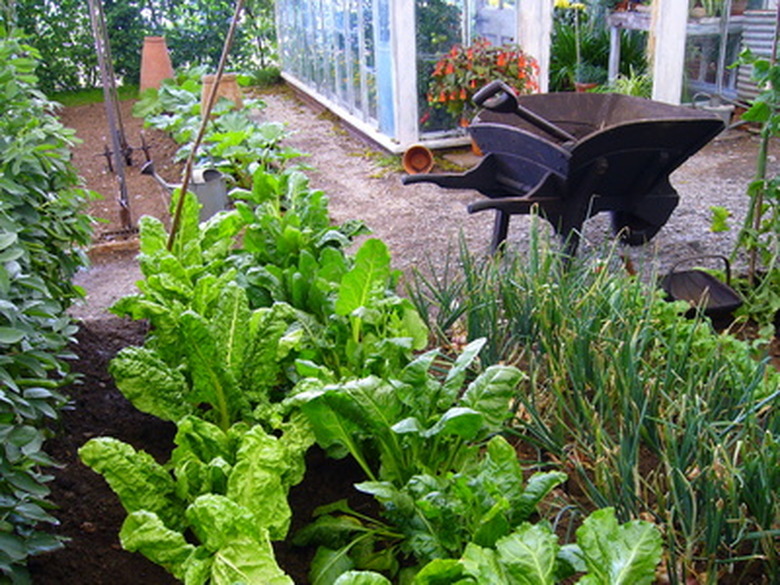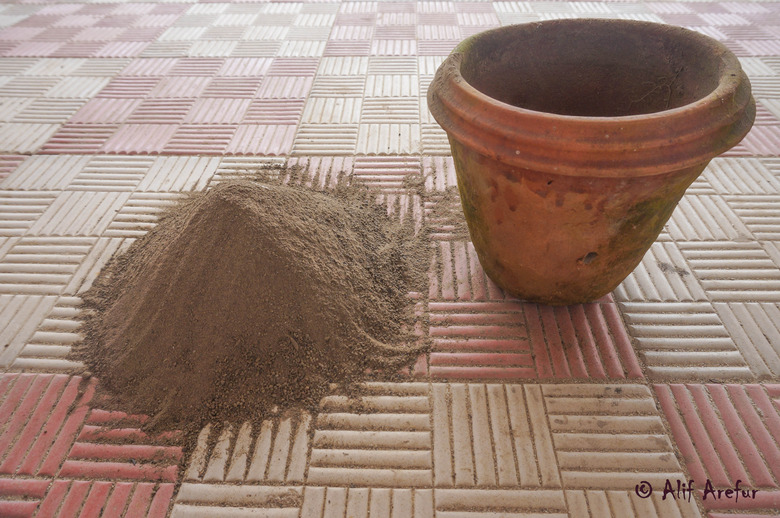How To Make Sandy Loam Soil
Building sandy loam soil varies according to local environmental conditions and the needs of the gardener.
Soil is made up of different components that provide nutrients and moisture to plants. Sandy loam contains a higher proportion of sand than most other soil types.
An in-ground garden bed may be amended with compost to lighten the soil or increase water absorption, while raised beds and containers can be filled with a DIY potting mix.
What Is Sandy Loam Soil?
The three primary types of soil are clay, loam and sand. The soil type is determined by the amounts of clay, silt and sand, plus organic matter, in the garden bed or landscape. Sand is the largest particle at 63 to 2,000 microns, silt ranges from 2 to 63 microns, and clay is the smallest, at less than 2 microns.
In general, the best soil for a garden is organically rich loamy soil. Depending on the plants' needs, the composition may contain more sand to make a sandy loam or more clay to make a clay loam. Sandy soils are loose, quick-draining and don't hold nutrients for the plants' roots, while clay soils are dense, nutrient-rich and slow to drain. They can also be oxygen poor.
Percentages of Components for Different Soil Types
When building soil, whether for a vegetable, cacti or rain garden, it's important to balance the components of the mix and then add organic matter. The percentages of the components that decide the soil type are approximately:
- **Sandy:** 85 percent or more sand, 5 to 7 percent silt and 7 to 10 percent clay
- **Sandy Loam:** 70 to 85 percent sand, 10 percent silt and 10 percent clay
- **Loam:** 40 percent sand, 40 percent silt and 20 percent clay
- **Clay Loam:** 15 percent sand, 50 percent silt and 35 percent clay
- **Clay:** Less than 45 percent sand, less than 40 percent silt and more than 40 percent clay
Texture Descriptions for Different Soil Types
The texture of the soil also indicates the type of soil. Moisten a soil sample, then take a handful and squeeze it. The texture and ability of the soil to hold together when squeezed also determine its type, such as:
- **Sandy:** Gritty and won't form a ball
- **Sandy Loam:** Gritty and forms a loose, crumbly ball or squeezes into a short ribbon of soil
- **Loam:** Somewhat gritty and forms a ball or 1-inch-long ribbon, not sticky
- **Clay Loam:** Less gritty and holds together in a ball or 1- to 2-inch-long ribbon, somewhat sticky
- **Clay:** Smooth and forms a sticky ball or 2-inch or longer ribbon, can be shaped into figures
There are other variations between the two extremes. In addition, the size of the sand particles ranges from very fine to coarse, which affects the gritty feel of a sandy loam soil.
Amending Existing Garden Soil
After determining the soil type, amend the garden soil to accommodate the plants that thrive in loose, well-drained soils like a sandy loam.
Avoid Only Adding Sand or Clay
Although there are a number of sources that repeat the old belief that adding sand to clay will loosen the soil, don't do it. Clay plus sand plus water results in a concrete-like soil structure. In general, using sand to lighten clay requires equal parts sand and clay, which is prohibitive in both labor and cost of the materials in a garden setting.
The same issues face gardeners working with sand, such as a beach or desert location, or sandy soils. Extremely sandy soil cannot be modified by adding a few cubic yards of clay and mixing the two together. Again, it requires equal parts of sand and clay to make a true difference in the soil type.
Add Organic Matter
Instead, use organic matter to lighten heavy clay or slow the passage of water and nutrients through sand. Digging in 2 to 4 inches of compost and well-decomposed manure improves drainage, adds nutrients and provides looser soil where the plants' roots can spread out.
While it can take a few years to improve sandy or clay soil, the cumulative effort of adding organic matter every spring and fall will benefit the garden.
Warning
Although there are a number of sources that repeat the old belief that adding sand to clay will loosen the soil, don't do it. Clay plus sand plus water results in a concrete-like soil structure. In general, using sand to lighten clay requires equal parts sand and clay, which is prohibitive in both labor and cost of the materials in a garden setting.
Filling a Raised Bed
Raised beds and container gardens are an alternative when the soil is poor, rocky or boggy or the space has no exposed soil for planting. When building a sandy loam soil, follow the general guidelines of 1 to 2 parts each of silt and clay, plus approximately 6 to 8 parts coarse sand, then add compost and other organic matter.
While that sounds simple, consider the elements used in building the soil. Often gardeners use budget-friendly garden soil or topsoil when building a mix for raised beds, which may contain more than enough silt and clay.
To use the texture method, measure out equal parts of topsoil, compost and sand. Adjust the components to make a sandy loam by adding more sand until the moistened mix forms a gritty, loose, crumbly ball when squeezed firmly.
How to Determine the Amount of Sand, Silt and Clay in Existing Soil
Alternatively, determine the amount of sand, silt and clay in the existing soil using a clear glass or plastic jar and water:
1. Pour the soil through an old colander to remove large pieces. 2. Fill a recycled jar one-third full with the sifted soil. 3. Add water to within 1 inch of the top of the jar. 4. Add 1 tablespoon of powdered dishwashing liquid. 5. Put the lid on securely. 6. Shake well to mix the soil, detergent and water. 7. Set the jar where it will be undisturbed and wait for one minute. 8. Mark the top of the sand layer on the jar with a permanent marker. 9. Wait two hours, then mark the silt layer. 10. In 48 hours, mark the clay layer. 11. Measure the layers and calculate the proportions of sand, silt and clay.
After determining the percentages of sand, silt and clay in the soil, measure out the soil in buckets and add additional sand as needed to increase it to 70 to 85 percent of the mix. After filling the raised beds, add at least 2 inches of compost to increase the organic matter in the soil.
Building a Loamy Potting Soil
Container gardens shouldn't incorporate garden or topsoil, as it is generally too heavy and may introduce pathogens and pests into the home or greenhouse. Instead, use a standard potting mix and add extra sand, up to equal amounts of potting mix and sand, to make a gritty sandy loam.
How to Make Your Own DIY Potting Mixes
Alternatively, make your own DIY potting mix using a combination of compost, peat moss or coconut coir and sand. In a large container or 5-gallon bucket, mix:
- 1 part compost
- 1 part peat moss or coconut coir
- 1 part coarse sand
Adjust the mix as needed to suit the needs of the individual plants. Some plants, such as succulents, need a quick-draining mix. For a DIY succulent mix, combine:
- 2 parts compost
- 1 part peat moss or coconut coir
- 2 parts sand or 1 part sand and 1 part perlite
No matter what mix is used, soak it thoroughly before filling flowerpots and adding plants. Peat moss tends to shed water, and coconut coir is compressed into blocks; both need to be completely moist before they are used as part of a potting mix.
References
- University of Michigan: A Guide for Preparing Soil Profile Descriptions
- University of Georgia: Soils at UGA
- Utah State University Yard and Garden Extension: Gardening in Sandy Soils
- Illinois Extension: Does Sand Improve Clay Soil Drainage?
- Clemson Cooperative Extension: Soil Texture Analysis "The Jar Test"
- University of Florida IFAS Extension: Homemade Potting Mix

